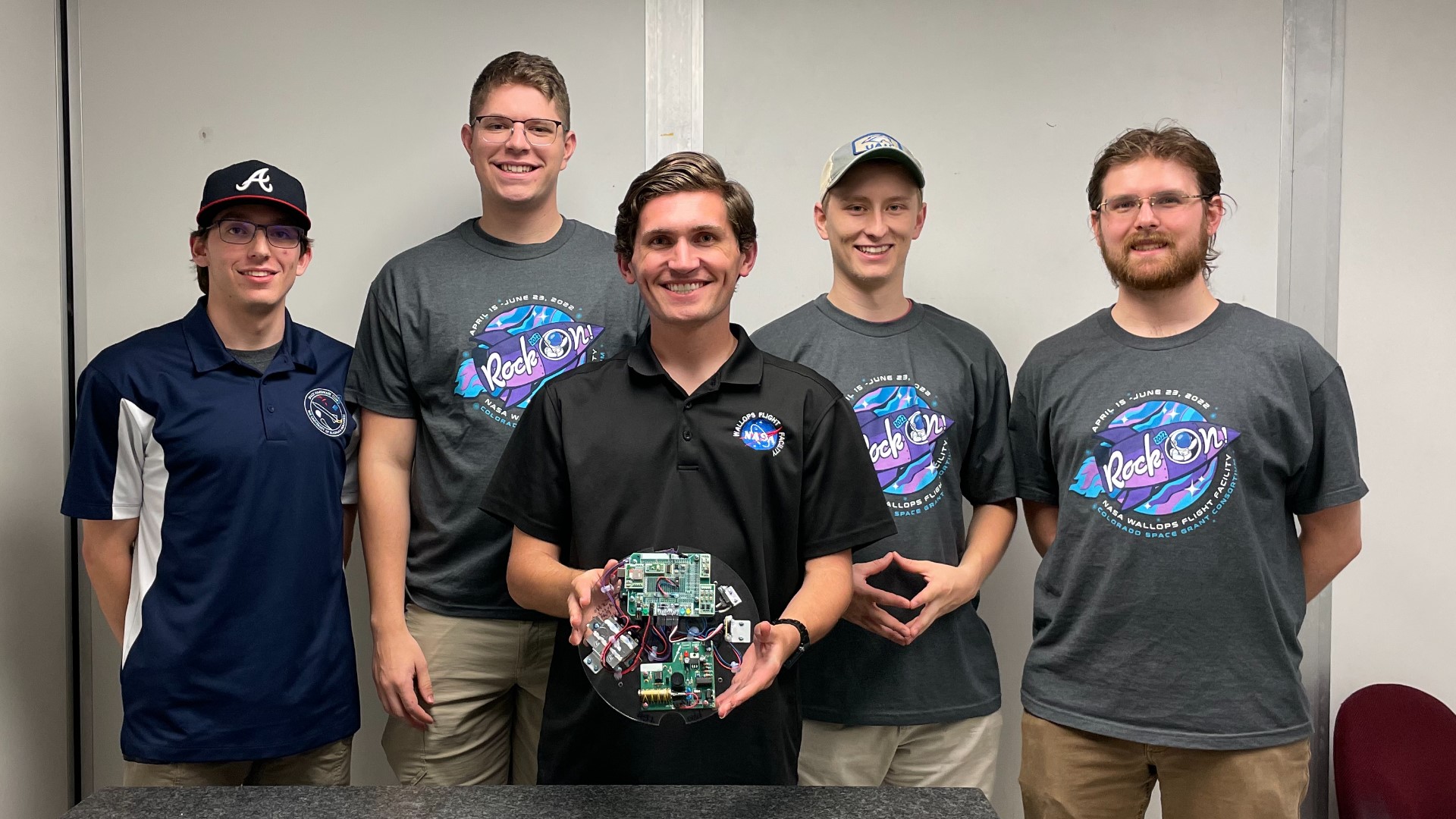HUNTSVILLE, Ala. — Last week was launch week for a group of students at the University of Alabama in Huntsville. Members of the school’s Space Hardware Club organized the Terminus Spaceflight Research Group. This team participated in a NASA program that allows college students to send machines to space for whatever kind of project they want.
The 10-person team took advantage of that creative freedom and worked on a payload that analyzes the process of sub-orbital travel - or flights that don’t totally escape the Earth’s atmosphere as far as satellites do.
"From as soon as the first stage ignites on the pad, we go up, hang out in space, come back through the atmosphere, and land in the ocean … This has a variety of sensors that tells us all the events that are going on with that,” said Ben Campbell, a graduate student majoring in aerospace systems engineering and the team’s project manager.
The payload flew on a Terrier-Orion rocket out of NASA Wallops Flight Facility on Wallops Island in eastern Virginia on June 24. UAH was one of 32 other college projects onboard. It was part of NASA's RockOn! and RockSat-C programs, which are in their thirteenth and fourteenth years, respectively. The last UAH student-led project to go to space was the ChargerSat-1 - another Space Hardware Club venture - back in 2013.
Senior Matthew Bray said after being exposed to aeronautics as a kid by his father, he wanted to pursue this project.
"Just to be able to put something into space, this early in my career, is indescribable, really," said Bray, an aerospace engineering major. As a Huntsville native, he said he was always interested in pursuing the programs at the hometown school.
Similarly, Campbell says opportunities like this are why he came to UAH for grad school after attending Northwest Nazarene University in Nampa, Idaho.
"They see the potential with the students and say, ‘These are students that want to do some really awesome things,’” he said. “Especially stuff with all this engineering, aerospace, everything like that. And they see, ‘all right, they want to do that? We have the resources to help them.’"
Campbell says this flight, while the first from UAH in nearly a decade, is the rubric for future projects.
"The goal with this group I've put together is not to do just little, one-off missions, but our goal is: get a regular cadence of sending student payloads to space on about an annual basis, if not quicker,” he said.
While Campbell and his team are able to work on the data they're obtaining from space, they're awaiting the return of their first unit which is on its way back from NASA’s Wallops Flight Facility in eastern Virginia.

